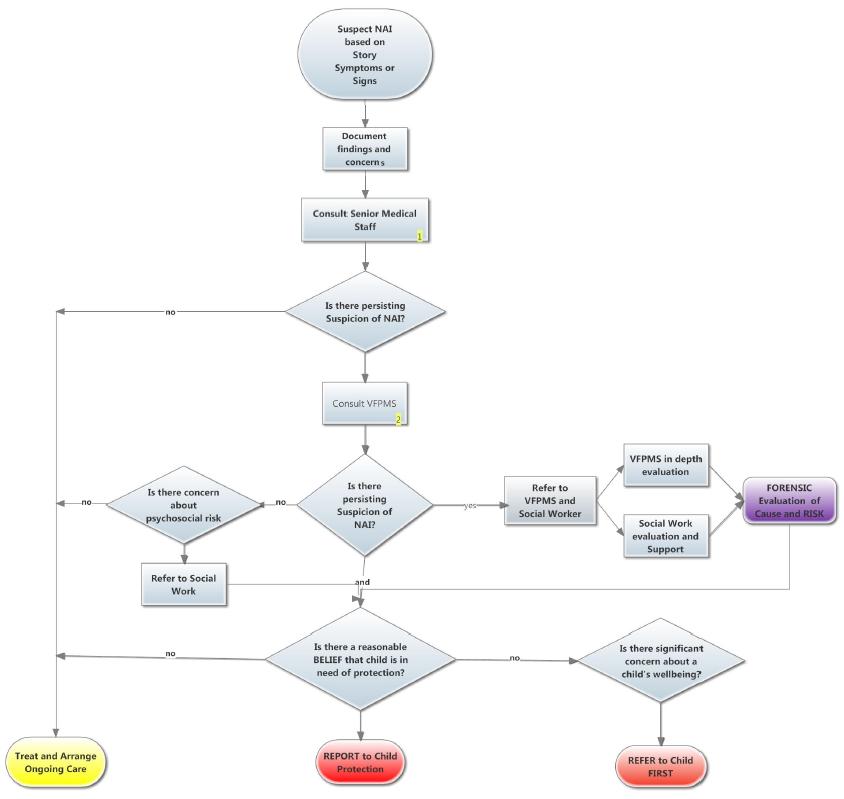RCH Clinical Practice Guideline Family Violence
VFPMS Guideline: Recommended forensic evaluation of physical
abuse
Physical abuse is the physical use of force (with or without
an implement) against a child that causes, or has the potential to cause,
physical injury.
Different terms are used to refer to injuries caused by
physical abuse, including non-accidental injuries (NAI) and inflicted or
abusive injuries. The term “intentional” is sometimes used, but because
intentionality cannot be determined on the basis of an objective medical
assessment, this term will be avoided.
Any child for whom abuse of any kind (including physical
abuse) is suspected needs a full assessment of their physical condition and
psychosocial context. A detailed history should be obtained and a thorough
physical examination should be performed. Sometimes investigations are
required, as will be discussed in detail in the VFPMS symptom/sign-specific
guidelines. This often includes searching for occult injuries because young
children are not able to accurately describe their symptoms or the forces that
have been used against them.
Key points:
Many inflicted injuries are occult and will not be reported
(or detected) by the child’s carer.
Concerns of abuse should be raised in the following
circumstances:
- No history to account for the injury.
- History of unwitnessed trauma.
- History of family violence.
- History incompatible with the child’s age or developmental
capabilities.
- History is not a plausible explanation to account for the
injury.
- Inconsistent or changing histories.
- Unreasonable delay in seeking medical attention.
- Any injury in a non-ambulatory child.
- History of another child causing significant injury.
- Certain injuries with high specificity for abuse (for
example ear bruising, posteromedial rib fractures or any injury in a
non-ambulatory child).
- An infant with an unexplained encephalopathy (suspect
Abusive Head Trauma).
N.B. VFPMS staff recommend a non-judgemental, sensitive
approach to these cases. We recommend asking children only necessary and
open-ended (non-suggestive) questions about their suspicious injuries. The
presence of an observer is strongly recommended at all times.
Suggested management flow-chart for suspected physical abuse

Admission or discharge from hospital?
A low threshold for admission is appropriate when dealing
with an injured child
Admission to hospital should be arranged when it is medically
indicated or if it is necessary for the child’s safety. When a child is
admitted for suspected child maltreatment, a SCAN (Suspected Child Abuse and
Neglect) meeting will need to be held within 24hours of admission. SCAN meeting
resources available here.
Any infant with a cerebral injury, from shaking or direct
trauma, should be admitted to ICU for monitoring overnight. Delayed
deterioration may occur.
Discharge from hospital is a shared responsibility of
hospital staff and Child Protection staff.